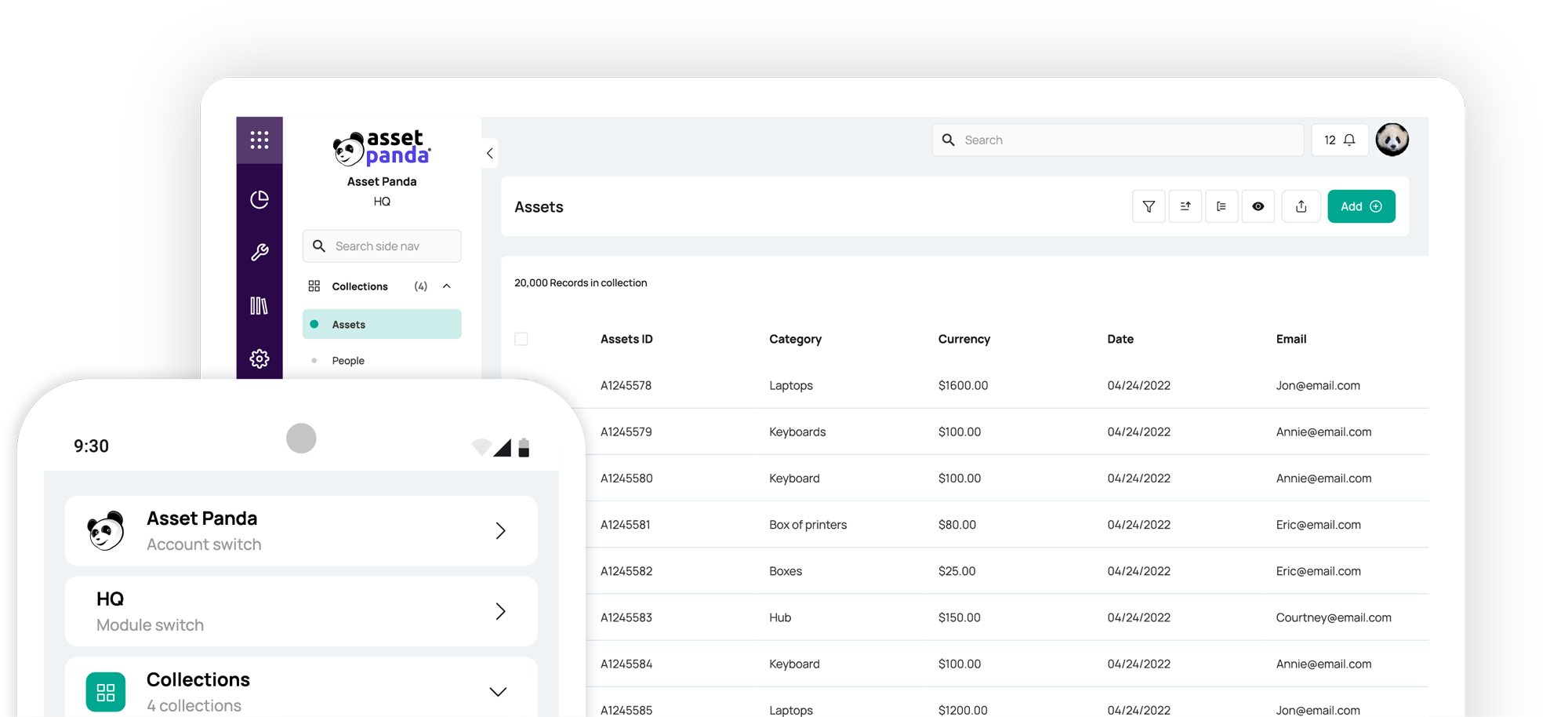What is Digital Transformation? Demystifying Why It’s Revolutionizing Every Industry
Blog

Table of Contents
Take Control of Your Assets
A personalized demo is just one click away.
In a world that is constantly innovating, your organization can’t afford to stand still. It makes smart business sense to continually review, revise, and update the processes your employees use every day. When organizations propel their systems into the future by harnessing the latest technology in a way that makes sense, they’re taking part in a strategy called, “Digital Transformation.” What is Digital Transformation? Read on to learn more about what digital transformation is Digital Transformation and how it’s modernizing the business world at every level.
Key takeaways
- Digital Transformation is a strategy of implementing technology-based solutions.
- Digital Transformation can be adopted across a wide range of industries.
- Retail, banking, and healthcare are some of the industries that have been permanently transformed by modern technological tools.
- A user-friendly IT asset management system (ITAM) is the backbone of an organization’s Digital Transformation strategy.
What is Digital Transformation?
Picture a healthcare organization that maintains patient records in an unwieldy system of file folders. Not only do these physical folders take up a great deal of storage space in the clinic office, but it can also take time to track down patient information in a timely manner, contributing to the time patients spend at their appointments and on the phone, waiting for employees to find their file.
One day, the office converts their physical folder system to a digital solution. The transition process takes time, but its implementation remodels the entire organization. Patient satisfaction increases as employees recover their data through a simple computer query, and employees spend less time on administration. What happened? The healthcare organization underwent Digital Transformation, and the results were truly transformative.
What is Digital Transformation in a nutshell? It’s a fundamental readjustment of how an organization functions after it adopts new digital technology. It is not simply a policy of adopting every new technology, but a focused strategy of considering improved customer service, addressing organizational inefficiencies, and making data-driven decisions with technology. While it can be easy to dismiss the latest technology as a passing fad, organizations would be wise to stay abreast of new developments. Not every digital solution for work for your organization, but the one that does just might revolutionize your day-to-day tasks.
What Are the Benefits?
When an organization embraces Digital Transformation as a central principle, there are many short and long-term benefits that follow. Right from adoption, you and your employees will observe improved efficiency in your daily processes. In the long run, that saved time seriously adds up.
Since this is a high-level strategy and the technological solutions it entails can be wide-ranging, the modern business landscape is undergoing Digital Transformation at scale. According to Roberta Fusaro, an editorial director at consulting firm McKinsey, more than 90% of businesses are currently implementing Digital Transformation in some form. Here are some of the ways different industries are adopting new technologies to improve employee efficiency, customer satisfaction, and product performance.
1. In Banking
Digital Transformation in banking has brought forth a more customer-focused strategy than ever before. Banks are embracing all-in-one digital hubs where customers can access their checking and savings accounts 24-7, improving customer retention.
Some banks allow customers to use their phone cameras to make check deposits and integrate with payment services like Zelle so customers can conduct financial transactions all in one place. Banks that have adopted Digital Transformation strategies have improved the convenience of digital banking so it’s more centralized about the customer’s needs than anything else.
2. In Healthcare
Digital Transformation in healthcare has significantly shifted the way patients receive care in the digital age. The Covid-19 pandemic accelerated the rate at which facilities adopted telehealth software to securely conduct doctor’s visits remotely.
Another example is the widespread use of electronic health records, so patients can access prescriptions and notes from their appointments through an online hub. These technologies make healthcare easier to access from home, removing critical obstacles that delay people from seeking medical attention and greatly lowering the bar to entry when it comes to getting care.
3. In Retail
Retail Digital Transformation has reshaped the way customers experience shopping. Increasingly sophisticated e-commerce software changed how people buy things online, reducing the number of steps that take people from window-shopping to clicking the “buy” button.
Meanwhile, in-person retail stores have developed new purposes—from showrooms to immersive brand experiences—and support friction-reducing technology solutions like self-checkout. Thanks to generative AI, retailers are also adopting algorithmically-optimized pricing models that respond to supply and demand in real time.
Transforming With Artificial Intelligence
As you consider your organization’s Digital Transformation strategy, you would be remiss to overlook the moment’s most buzzworthy technology, artificial intelligence (AI). AI is the umbrella over multiple related technologies like machine learning, automation, and predictive analytics—all of which can be incorporated into your AI Digital Transformation to generate data-driven business decisions.
Some of the largest corporations on Earth are using AI at the center of their Digital Transformation strategies. For example, Netflix uses machine-learning algorithms to analyze users’ interests based on previously watched shows and to suggest other media they might enjoy. Meanwhile, Amazon uses AI internally (to anticipate stock shortages) and externally (an AI-powered shopping assistant). Consider how AI can help your company automate processes and increase customer satisfaction in a number of ways.
Next Steps In Your Digital Transformation
Now that you know what Digital Transformation is, it’s time to take action—starting by digitizing IT asset management —one of the most time-consuming tasks for your organization. It’s crucial to take careful inventory of the hardware and software that make up the core of your organization’s Digital Transformation strategy. A user-friendly IT asset management software allows you to automate repetitive asset tracking tasks so you can more efficiently put that investment in your organization’s future to work.
Your technology fleet—including laptops, computers, servers, the programs that make them run, and even their software licenses—is what powers your organization’s data-driven decisions and increased digital efficiency. Make them just as efficient by choosing the right ITAM solution: one that will track and manage the entire lifecycle of your assets in real-time so you and your employees can focus on your core mission.
Take Control of Your Assets
A personalized demo is just one click away.
Frequently Asked Questions
How do you measure Digital Transformation?
It’s important to track key metrics to determine whether or not your Digital Transformation strategy is working. Different organizations measure in different ways depending on their key goals. For example, you could track improved customer satisfaction, increased employee productivity, or market share growth. The important thing is to choose just a few top metrics and track them consistently over the long term.
What are some risks of Digital Transformation?
Compromised cybersecurity is a risk that goes hand-in-hand with implementing a new Digital Transformation strategy, so it’s important to develop a plan to secure any digital solution your organization is considering. Employee training can also be a hurdle if the new digital solution is not user-friendly. It’s important to foster technology literacy among employees so they can harness the new digital solutions to their highest and most efficient potential.
What are the four pillars of Digital Transformation?
Digital Transformation is considered to be a strategy with four pillars: Technology, Process, People, and Skills. Technology refers to the hardware and software; Process refers to the procedures and workflow of implementing the technology; People refers to the workforce using the processes; and Skills refers to the training the workforce will require. When all four are in place, your Digital Transformation strategy will thrive.
Why do some Digital Transformation projects fail?
Some Digital Transformation projects fail when organizations don’t pay attention to the four pillars. Perhaps an organization adopted a new technology solution without proper research, and it wasn’t the right fit for the organization. Or maybe it found a useful solution but didn’t implement a new process to increase inefficiency. Or maybe it neglected to train its workforce on the new software, for just a few examples.
Learn more from a solution specialist
Schedule a demo to find out how you can transform your workflows with Asset Panda Pro
Contact our team at (888) 928-6112



